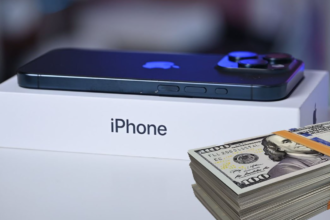The retail industry has undergone extraordinary upheavals in recent years and has been forced into a process of perpetual reinvention. The coronavirus pandemic unquestionably accelerated the rise of ecommerce, but rumors of the death of bricks and mortar stores are exaggerated and premature. According to a 2021 survey 46% of consumers still prefer the real-world retail experience and when they have a good one, 90% of them are likely to come back for more.
No More Cashiers
The retailers who are not just surviving but thriving are those who are exploring ways of maximizing the positive aspects of an in-store visit. Cashier-less shopping was pioneered by Amazon in 2018 [2] and is proving popular. Sensors and cameras follow the activities of each shopper, monitoring what they put into their cart or basket and billing them automatically without the need to stand in line and pay.
Social Media
Social and omnichannel commerce represent another significant example of how digital technology is being used to transform the retail space. Making connections between social media platforms and the store experience adds new layers of enjoyment and efficiency for consumers. Shoppers can use social media in real-time to interact with friends, asking for advice, approval or just involvement, while also interrogating the specifications and provenance of product lines.
The Advantages of a Physical Store
There’s a lot you can do with technology to transform the everyday experience for your customers and much of it involves capitalizing on the unique properties of the physical experience. Ecommerce businesses are at a disadvantage when it comes to trying products out first-hand or seeing if clothes are flattering or a good fit. Virtual reality can so far only achieve so much. Get people into your store and you can outmanoeuvre the online retailers.
Visual Impact and Customer Interaction
Visual technology is a gift to retailers, offering versatility that goes way beyond the potential of printed display material. It can also counteract the ever-shortening attention spans of shoppers by providing instant information. It’s increasingly common to see supermarket digital signs installed to direct grocery shoppers to specific lanes, special offers and promotional demonstrations. Most people want to spend as little time as possible in the supermarket, so this is an excellent way to speed up the process.
But this is just the beginning. The inherent flexibility of digital signage, controlled centrally and spread across multiple screens, means a retailer can disseminate any message they choose. It’s already a common sight in schools, galleries, museums and other public buildings. The time has come for stores to catch up.
Videos, infographics, live feeds and news channels – these are just some of the extensive options that digital signage technology makes possible. Tell the history of your brand, or provide insights, facts and figures on targeted products. Explain the environmental journey behind food, clothes, footwear, jewelry and more. Display items in location-specific contexts. Reveal the production process and share consumer feedback. Your only limit is your imagination. The one principle to observe is to connect quickly with your customers. Digital signs used well can make them feel they’re part of a conversation.
Participation of other kinds is also possible. Digital touches can turn a routine store visit into a fun and memorable experience. You can use kiosks and pop-up displays to suggest products your customers might like based on their previous behaviors or to promote new lines and seasonal favorites. It’s the modern way to upsell.
Add QR codes to displays encouraging shoppers to share feedback and take part in surveys and prize draws. Fitting rooms can be equipped with digital technology that turns mirrors into screens so someone can try on clothes and at the touch of a keypad change the color or pattern they see. Digital technology, like smart signage and interactive devices adds a brand new dimension to an experience that already offers one more than ecommerce.
The Traffic Challenge
Ecommerce businesses devote investment and resources into SEO and every other method of attracting shoppers to their websites. In the same way, physical retailers must exploit the potential of digital technology to increase footfall, provide a superlative shopping experience and convert the casual visitor into a loyal repeat customer. Catch their eye with a visually arresting digital window display and the chances are they’ll come in out of curiosity and stay because they love what you have to offer.















